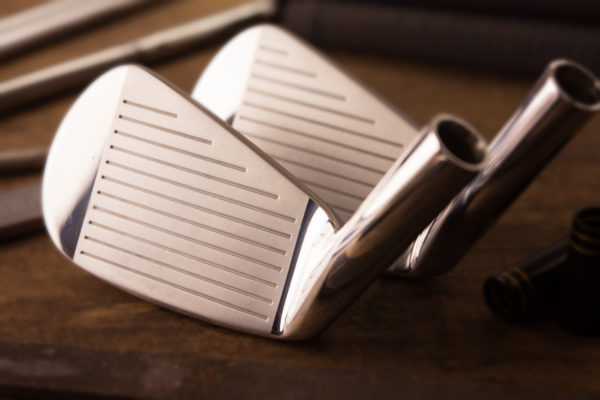The Retirement Plan “Fitting Process”
by Gabriel Lewit

If you have read my blog posts in the past, you will undoubtedly know that I am a total nut about the game of golf. In fact, I even made a living at it for a brief part of my life after college. As a competitive golfer, I was perpetually looking for opportunities to improve my game. This is where golf club fitting came in.
Without a properly fit set of clubs, a golfer’s swing and mechanical changes may fail to reach the desired outcomes. Playing with ill-fitting equipment can undermine even the most talented athletes in the world—in all sports, not just golf.

Now, if you’re also a golf fan you will know the name David Leadbetter. David is a world renowned golf instructor and has taught some of the very best players in the world. David had this to say about club fitting, “It never ceases to amaze me that golfers buy clubs off the shelf and assume they’re right for them. Whether you’re a great golfer or a casual one, getting a custom club fitting is one of the quickest ways to improve your game.”
I bet you can already see where I’m headed with this one! Building a retirement plan is much like building your new set of golf clubs. You can’t just buy products off the shelf and hope that they will fit your needs and goals. People come in all shapes and sizes and each one of them probably swings the club differently. Meaning their set of clubs should look very different from one another. The same goes for retirement plans. Everyone’s plan should all have a unique mixture of products inside of it, designed to be custom fit for the individual buying them.
“Fitting” Considerations:
When it comes to getting fit for golf clubs, in order to do it to the absolute best of your ability, you need to look for four key things: equipment variation, the technology used, the fitter’s expertise, and how the club is actually built. These are the same key elements that you should look for when creating your retirement plan. Let’s look into those four key elements with a little more in depth.
1. Equipment (Product) Variation:
How many different products can you explore during your fitting session and even better, can you mix and match them? At the end of the day, the more choices you have, the better. If you’re only getting fit for one or two retirement products, you are not getting even close to the breadth of combinations available today. This is why it’s so important to work with an advisor who is not captive to a specific company or product line. Can they offer you products on both the red money side and the green money side?

Just as you wouldn’t work with a golf club fitter that only offered one brand of clubs, you shouldn’t work with an advisor who can only offer one line of products!
2. Technology Used:
When you’re getting fit for golf clubs, a launch monitor is a MUST. It is imperative that you see your data on the screen so that you can determine if you are moving in the right direction with the products you are testing.
When you’re planning for retirement the same mantra applies. You need to see if the products and portfolios being recommended to you fit into your plan and truly make the story better. You should be able to see this clearly on a screen and shouldn’t have to take your advisor’s “word for it.”
3. Your Fitter (Advisor):
If you think reading a launch monitor and your fitter saying “Your spin is too high, try this” is all there is to golf club fitting, think again. There is an art to the science behind all of this, and if your fitter hasn’t been fitting for long or hasn’t seen a couple hundred people, you’re taking your chances that they truly know what they’re doing.

You should be asking the same questions about your advisor. How long have they been taking care of others like you? How many clients do they have? Are they truly independent, or do they represent a specific company (Northwestern Mutual, Mutual of Omaha, Nationwide, etc.)? Make sure you do your research and find someone who is truly out to help you select the right mix of products for you!
4. Club (Plan) Building:
At the end of all of this, if you have a perfect 3 out of 3 score from above, but your clubs are built in the “custom shop” of a manufacturer (i.e. assembly line) your odds of getting the clubs built exactly to your specifications decrease considerably. No two sets should be alike, and you need someone to get those lofts, lies, lengths, and swing weights dead-on to take full advantage of any golf club fitting process.

Your retirement plan, of course, should be built the same way, by someone who knows how to put the pieces together. If you followed the steps above, you might have some tremendous products to put into your portfolio, but you still need someone to design the plan for how you use them. Remember, no product should ever be purchased before seeing how it fits into your plan as a whole!
Finding the Perfect Clubs
From drivers (the most aggressive products, built for the long game) to putters (the club you need to rely on each hole, built for the shortest shots) it’s important that each club in the bag enhances a golfer’s skills while compensating for their tendencies.
But often times, products bought right off the rack require a golfer to adapt his or her swing to adjust for the clubs. You do not want your retirement to mirror this in any way shape or form. Unfortunately, this happens to so many people in their Golden Years. Because the products weren’t fit to their plan, they had to adjust their lifestyle (often negatively) to compensate.
Custom fitting and planning works the other way around, by identifying a golfer’s swing characteristics to build a perfect set of personalized clubs which maximizes that players performance or, in our case, a retirement portfolio that helps you live out those years to the fullest!
